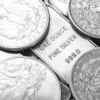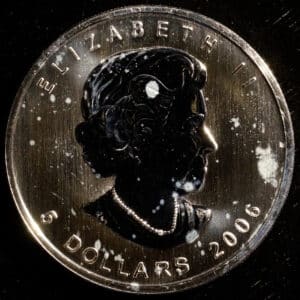Are We Headed for a New Gold-Backed Currency? Exploring the Advantages of a Gold-Backed Dollar

The financial world is abuzz with talks of a potential shift in the international monetary system – the prospect of a new gold-backed currency. This concept has been fueled by increased global economic instability, fluctuations in the value of fiat currencies, and concerns over hyperinflation. The U.S. dollar, which currently holds the status of the world’s reserve currency, is at the center of these discussions.
The appeal of a gold-backed currency lies in its ability to bring stability and confidence to the monetary system, limit government spending, and protect against hyperinflation. As we delve into this topic, we will assess the current state of global gold reserves, explore the potential benefits of a gold-backed system, and consider the implications of such a shift on the world economy.
The Risks of a Fiat Currency System
A fiat currency is a government-issued currency that is not backed by a physical commodity like gold or silver. Instead, the value of a fiat currency is derived from the trust and confidence of the people who use it. This trust is often based on the stability of the issuing government and its economy.
However, fiat currency systems have several inherent risks. One of the most significant risks is hyperinflation. Hyperinflation occurs when a government prints too much money, leading to a rapid and excessive increase in the general price level of goods and services. This can severely erode the purchasing power of the currency and cause economic instability.
Historically, there have been several instances of hyperinflation causing economic chaos. For example, in the early 1920s, Germany experienced one of the most severe cases of hyperinflation in history following World War I. The government printed vast amounts of money to pay war reparations, leading to skyrocketing prices and economic turmoil.
The Benefits of a Gold-Backed Dollar
In contrast to a fiat currency system, a gold-backed currency system ties the value of the currency to a fixed amount of gold. This means that the government can only issue as much money as its gold reserves can support. This limitation can help prevent the government from overspending and protect against inflation.
A gold-backed currency system can also bring stability and confidence to the monetary system. Gold has been valued as a form of wealth for thousands of years due to its scarcity and durability. As a result, a currency backed by gold can instill confidence among its users as they have the reassurance that their money is supported by a tangible asset.
Historically, gold-backed systems have proven to be successful in maintaining economic stability. For instance, during the classical gold standard era from 1871 to 1914, the world economy experienced remarkable stability and growth.
The World’s Reserve Currency Status and its Challenges
The U.S. dollar currently holds the status of the world’s reserve currency. This means that it is widely used for international trade and financial transactions, and many countries hold it in their foreign exchange reserves. The U.S. dollar’s reserve currency status is a result of the Bretton Woods Agreement of 1944, which established the U.S. dollar as the world’s primary reserve currency.
However, maintaining the status of the world’s reserve currency is not without its challenges. One of the most significant challenges is the so-called “Triffin Dilemma.” This refers to the conflict of interest that arises when a country’s domestic monetary policy objectives conflict with its international objectives.
Moreover, the BRICS countries (Brazil, Russia, India, China, and South Africa) have been exploring alternatives to the U.S. dollar as the world’s reserve currency. These countries have significant economic influence and their actions could potentially challenge the U.S. dollar’s dominance.
The Role of Precious Metals as a Hedge Against Inflation
Precious metals like gold and silver have long been considered a reliable hedge against inflation. This is because their prices often rise when the value of paper currency falls.
Furthermore, precious metals can provide diversification benefits for an investment portfolio. Unlike traditional assets like stocks and bonds, precious metals often move independently from other asset classes. This can help spread risk and reduce the overall volatility of the portfolio.
How Much Physical Gold is There in the World?

Kilo Gold Bar Johnson Matthey
The amount of physical gold in the world is finite and relatively small. According to the World Gold Council, about 190,000 tons of gold have been mined throughout history. This may seem like a large amount, but if all the gold ever mined were melted down, it would form a cube with sides of about 21 meters (69 feet).
The limited supply of gold is one of the factors that contribute to its value. However, it also poses a challenge for the implementation of a gold-backed currency system. Given the size of the global economy, there is not enough gold in the world to back all the existing money supply.
How Much Physical Silver is There in the World?
Unlike gold, silver has a wide range of industrial uses, which adds to its demand. However, similar to gold, the amount of physical silver in the world is also limited. According to the Silver Institute, there were approximately 560,000 metric tons of silver in the world as of 2020.
The demand for silver, particularly in the industrial sector, could potentially outstrip its supply. This imbalance could lead to an increase in the price of silver, making it an attractive investment option.
Why You Should Be Buying Gold and Silver
Investing in gold and silver can provide several benefits. Firstly, they can serve as a store of wealth and a hedge against inflation. As mentioned earlier, the prices of gold and silver often rise when the value of paper currency falls, protecting the purchasing power of your wealth.
Secondly, precious metals can provide diversification benefits for your investment portfolio. Because their prices often move independently from other asset classes, they can help spread risk and reduce the overall volatility of your portfolio.
Finally, the long-term value appreciation potential of gold and silver makes them attractive investment options. Over time, the prices of gold and silver have generally trended upwards, providing long-term investors with positive returns.
The Best Type of Gold to Buy
When it comes to investing in gold, there are several options available. These include gold coins, gold bullion, gold exchange-traded funds (ETFs), and gold mining stocks.
Gold coins, such as Gold American Eagles and Gold American Buffaloes, are a popular choice for many investors. They are easy to buy and sell, and they offer a tangible way to own gold.
Another option is gold bullion, which includes gold bars and ingots. Gold bullion is often purchased for its pure gold content.
Gold ETFs and gold mining stocks are other ways to invest in gold. These investment vehicles allow you to gain exposure to the price movements of gold without having to physically own the metal.
The Best Type of Silver to Buy

Silver Bullion Bars
Similar to gold, there are several ways to invest in silver. These include silver coins, silver bullion, silver ETFs, and silver mining stocks.
Silver coins, such as Silver American Eagles, are a popular option. They are easy to buy and sell, and they provide a tangible way to own silver.
Silver bullion, which includes silver bars and ingots, is another option. Like gold bullion, silver bullion is often purchased for its pure silver content.
Silver ETFs and silver mining stocks offer another avenue to invest in silver. These investment vehicles provide exposure to the price movements of silver without the need to physically own the metal.
Conclusion
The prospect of a new gold-backed currency has stirred up much discussion in the financial world. While it remains to be seen whether such a shift will occur, the idea underscores the enduring value and importance of gold in the global economy.
Investing in precious metals like gold and silver can provide numerous benefits, from serving as a hedge against inflation to offering diversification benefits for your investment portfolio. Whether you prefer to invest in gold or silver coins, bullion, or related investment vehicles, precious metals can form a crucial part of a well-diversified investment strategy.
In an uncertain economic landscape, owning tangible assets like gold and silver can provide a sense of security. As we continue to monitor the developments surrounding a potential gold-backed currency, one thing remains clear: the value of gold and silver is likely to endure, regardless of changes in the monetary system.














